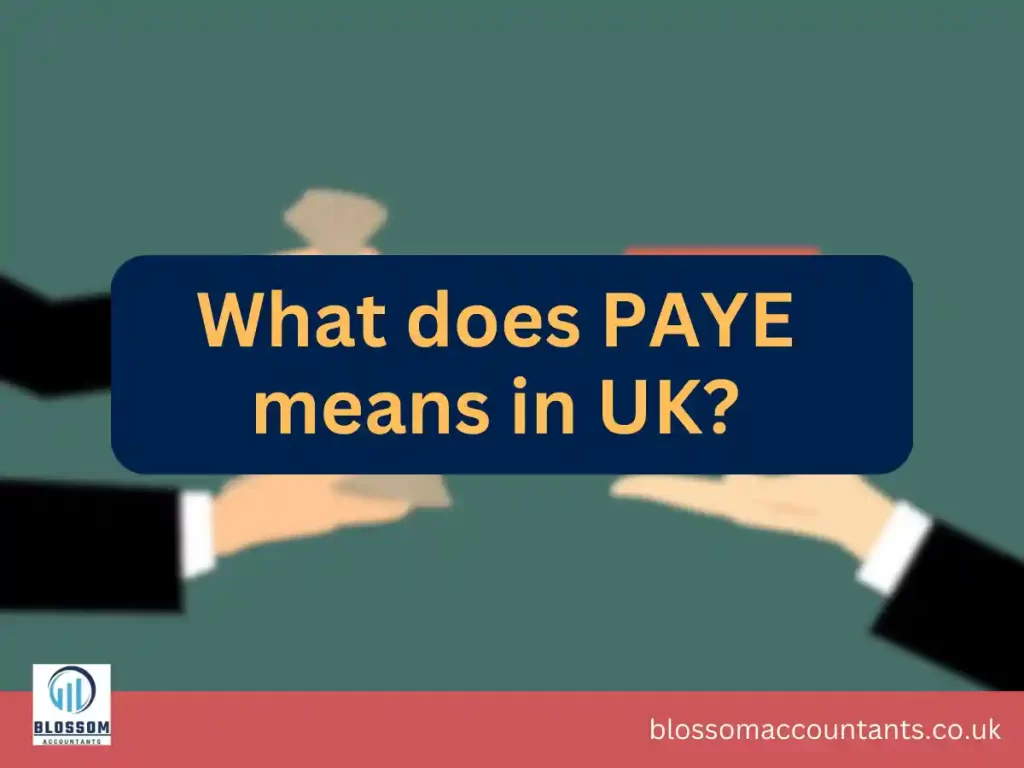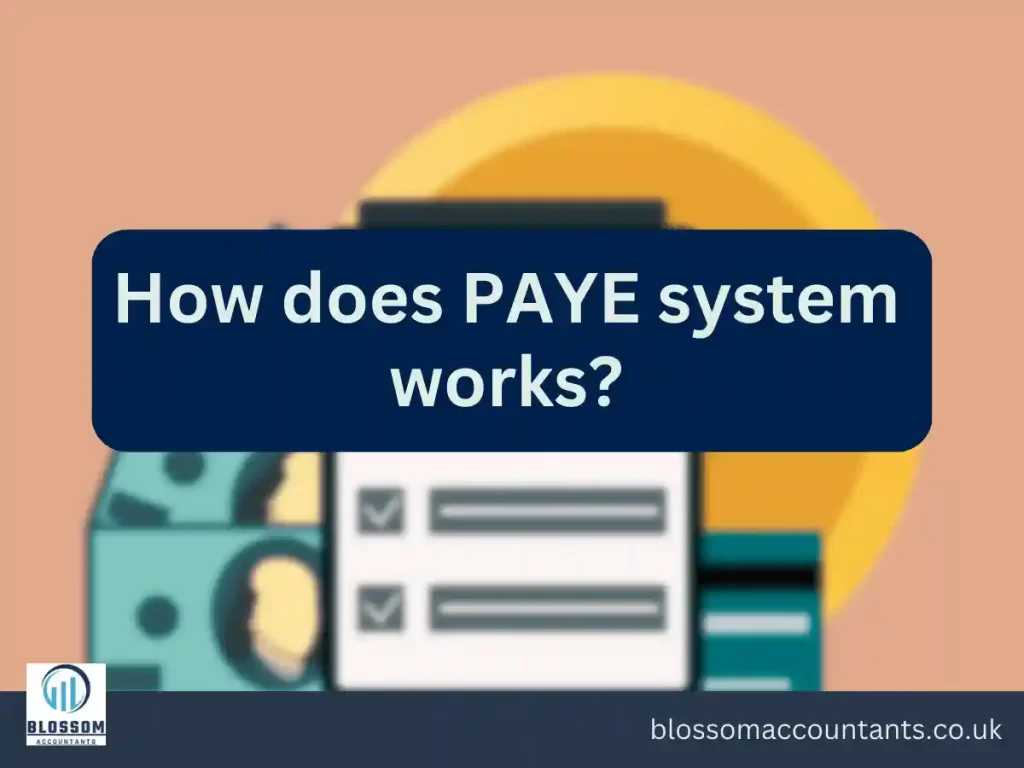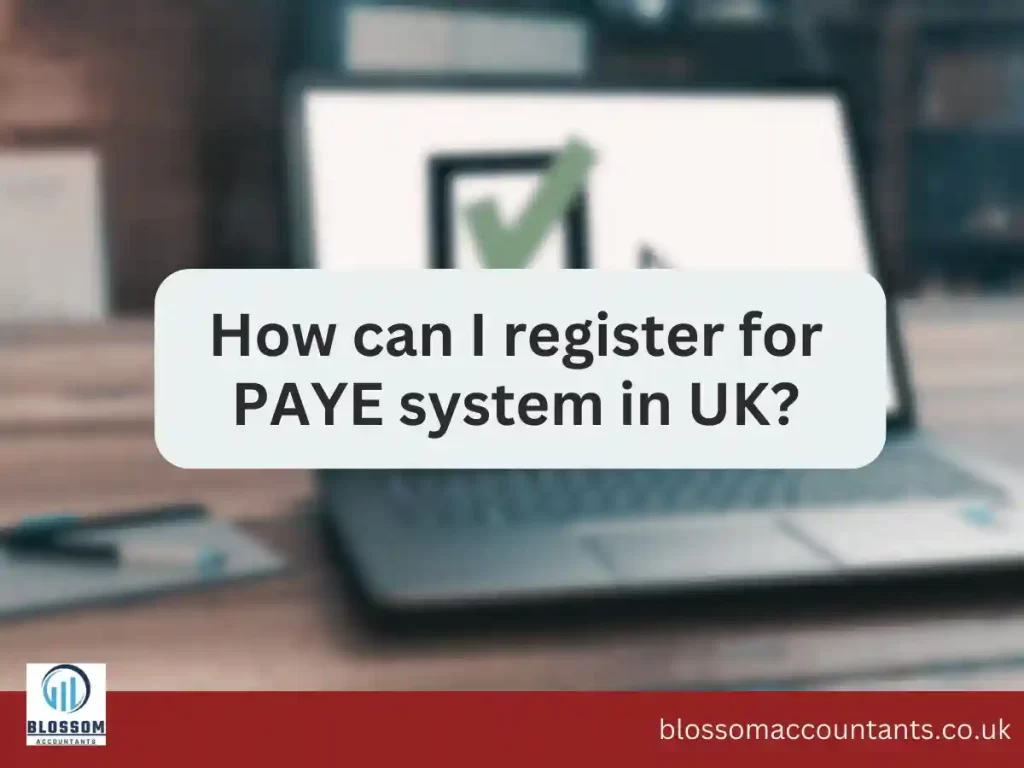PAYE (Pay As You Earn) is the system used in the United Kingdom to collect income tax and National Insurance contributions from employees’ salaries. It is an employment tax system implemented by HMRC (Her Majesty’s Revenue and Customs).
Under the PAYE system, it is mandatory for every employer to deduct the appropriate amount of income tax and National Insurance (NI) contributions from their employees’ salaries or wages every month.
Employers are required to report the deductions to HMRC through regular payroll submissions. They also provide employees with a payslip that details the deductions made and the net pay received.
For more details on the PAYE system please refer below questions or you may contact us for any query.
Table of Contents
What does PAYE means in UK?
In the United Kingdom, PAYE stands for “Pay As You Earn.” It is the system used by HMRC (Her Majesty’s Revenue and Customs) to collect income tax and National Insurance contributions from employees’ earnings.
Under the PAYE system, employers are responsible for deducting income tax and National Insurance NI contributions from their employees’ salaries or wages every month. The amount of tax and National Insurance deducted is based on the employee’s earnings and their tax code, which is assigned by HMRC.
Also read: SA401 form

How PAYE calculated?
The calculation of PAYE involves several factors, including:
Tax code: HMRC assigns tax code to every employee in UK. Based on the tax code assigns every employee can avail tax free allowance and other relevant deductions. Also based on tax code employee can calculate their monthly wages or salary that can be earned before tax is applied.
Tax Bands and Rates: The UK has a progressive tax system with different tax bands and rates. The income earned within each tax band is subject to a specific tax rate. For example, there are different tax rates for basic rate, higher rate, and additional rate taxpayers. Every employee is assigned to different tax bands and rates in UK
Monthly National Insurance NI Contributions: Based on the employee’s monthly earnings and their National Insurance category employees can contribute to the National Insurance NI including income tax every month.
Employers use HMRC’s tax tables or online tools to calculate the amount of income tax and National Insurance to deduct from each employee’s pay. They report and submit these deductions to HMRC through regular payroll submissions.
Every individual circumstances are different so employers deduct income tax every month from employee’s wages or salaries. You may consult a tax specialist or professional accountant to calculate income tax using the PAYE system for your employees in your company or use HMRC tax calculator for employees’ tax calculations.
How does PAYE system works?
Here’s how the PAYE system works:
Employers’ Responsibility: As per HMRC it is employers’ responsibility to calculate and deduct income tax and National Insurance NI from employees’ wages or salaries every month based on the tax code assigned by HMRC for every employees
Employee Tax Code: HMRC assigns tax code based on the HMRC starter checklist or P45 of an employee who submits it to the employer or based on income that every individual makes monthly whether it may be wages or salaries, rental, or any other business income. Based on the tax code assigned every individual is entitled to tax free personal allowances, or any tax reliefs.
Deductions: Based on the employee’s monthly income, income tax and National Insurance is deducted from employees’ wages or salaries every month. Employees receive their net pay after the deductions.
Reporting and Payment: As per HMRC it is employers responsibility to report the employees’ deductions and income tax and national insurance collected from employees wages or salaries. Whatever amount is collected from deductions it should be deposited to HMRC.
Payslips: Employers provide employees with payslips that detail their earnings, deductions, and net pay. This allows employees to see how much tax and National Insurance has been deducted.
Annual Reporting: At the end of each tax year (running from April 6th to April 5th), employers provide employees with a P60 form. The P60 summarizes the employee’s total earnings and deductions for the year. Employees can use the P60 to reconcile their tax affairs and make necessary adjustments.
In a nutshell, the PAYE system ensures that individuals’ income tax and National Insurance contributions are deducted gradually throughout the tax year. This will help the government to collect tax revenue in an efficient manner from employers in UK.
Also read: Payroll Number

How to check your PAYE number?
To check your PAYE number, you can find it on various documents and correspondence related to your employment. Below are the few places where you might find your PAYE number:
Payslips: Your PAYE number is often printed on your payslips, along with other payroll information.
P60 Form: Your P60 form, which is issued at the end of the tax year by your employer, has PAYE number printed on it.
Correspondence from HMRC: If you receive any letters or forms from HMRC regarding your tax and National Insurance contributions, your PAYE number may be included in those documents.
Speak to the employer: You can contact your employer’s payroll or HR department to obtain your PAYE number.
If you don’t get your PAYE details from all these sources, you can call HMRC helpline and get your PAYE number from HMRC.
How can I register for PAYE system in UK?
Follow the below process to register for PAYE system as employer in UK:
Register as an Employer: You must register with HMRC as an employer if you setting up a business in UK and want to hire employees in UK. You can call HMRC employers helpline or register it through online system.
Submit your business details: HMRC will ask for your business details such as nature of business, location and company number, and many more details. They may also ask for Unique Taxpayer Reference (UTR) number for tax obligations.
Setup PAYE Scheme for your business: During registration process you can PAYE system with HMRC for your employees wages and salaries for tax obligations. You may need to submit details of your employees, like name, address, National Insurance NI.
Obtain PAYE and Accounts Office Reference Numbers: Once your registration is complete, HMRC will provide you with a PAYE reference number and an Accounts Office reference number. These numbers are unique to your business and will be used for reporting and making payments.

What are P60, P45 or P11d forms given to employee through PAYE?
Regarding the forms associated with PAYE:
P60: This is a form provided to employees at the end of the tax year (by May 31st) by their employers. It summarizes the employee’s total earnings, tax deductions, and National Insurance contributions for the tax year. It is important for reconciling tax affairs and can be used for tax rebate claims.
P45: This is a form provided to employees when they leave a job. It contains details of the employee’s earnings and tax deductions up until their departure. It is important for the new employer to ensure accurate tax coding and for the employee to manage their tax affairs.
P11D: This is a form used to report expenses and benefits provided to employees by their employer. It includes details of items such as company cars, health insurance, and other taxable benefits. The P11D form is used to ensure the correct amount of tax is paid on these benefits.
DISCLAIMER: We have written the UK accounting and tax related details for your information only. For professional advice or for any accounting task you require, you may need to speak to a professional accountant near you who can assist you. Please read our disclaimer for more details.

